The Modern Meeting Room
Our modern meeting rooms are full of the latest technology, but the humans in them are still using the same eyes and ears (interfaces) we were using since we started drawing pictures on cave walls.
 It would seem to make sense then that we should be designing the room, and the meeting environment, first around the human and then applying the appropriate technology within the boundaries of human factors and ergonomics.
It would seem to make sense then that we should be designing the room, and the meeting environment, first around the human and then applying the appropriate technology within the boundaries of human factors and ergonomics.
Designing for human factors reduces fatigue and stress, increases comfort, and provides greater user acceptance. These sound like some pretty good goals for an audiovisual system and where we should first focus our attention. In other words, we should be designing according to the limitations and needs of people.
So, what does the human need to do? The human needs to be able to see and not just see but read and comprehend. The human also needs to be able to hear clearly. Further, the human needs to be heard clearly and intelligibly to those who are listening regardless of whether the listeners are in the same room or on the far side of a videoconference.
As far as reading and comprehension, there’s an ANSI (American National Standards Institute) standard for this, the ANSI/AVIXA V202 Display Image Size for 2D Content in Audiovisual Systems. This handy little standard defines content size, image size related to content size, farthest viewer limits, closest viewer limits, and off-axis viewer limits. These limits draw the boundary lines for where to place the humans in physical relation to an image. And this is within the context of being able to assimilate the content over time without fatigue. This is not about testing the limits of human vision like with a Snellen chart during an eye exam. It’s about making sure the humans are comfortable in the viewing environment whether it’s a one-hour meeting or an 8-hour class. Keep in mind that the content to be comprehended by the viewers may only be a portion of the overall image size and you may need to design for the content portion and not solely the overall image size. The ANSI/AVIXA V201 Image System Contrast Ratio standard is a companion piece and defines the minimum contrast ratio needed for a good image. If you’ve done enough system measurements, you know there are way too many projected systems running at a 3:1 contrast ratio.
The human also needs to be able to hear. While our Acoustic Echo Cancellers (AECs) and Digital Signal Processors (DSPs) have gotten much better at removing steady-state background noise out of the audio being sent to the far side in a videoconference, what about the people trying to communicate with each other in the same room? Typically, the biggest noise offender is the HVAC system. For many years now, the American Society of Heating, Refrigeration and Air-Conditioning Engineers (ASHRAE) has published Design Guidelines for HVAC-Related Background Sound in Rooms in the Sound and Vibration chapters of their Handbooks. You will find that the maximum background noise in conference rooms and classrooms should be no more than NC/RC 30 (approximately 35 dB SPL A-wtd). The ANSI/ASA S12.60 Acoustical Performance Criteria, Design Requirements, and Guidelines for Schools agree with the maximum background noise level of 35 dB SPL A-wtd. Again, if you’ve done enough measurements, you know most spaces fall far short of these criteria. You can think of this as an acoustic signal-to-noise ratio – the ratio of background noise compared to speech level.
 A close second to the maximum allowable background noise level is the acoustical performance of the space. This is the actual sound signature of the room, and I can think of nothing more important that is also the least considered or even ignored. While the trend has been towards glass walls, shiny floors, wood panels and other acoustically “hard” surfaces, these materials are the least friendly when it comes to the acoustical criteria needed for human communication. Jun Lim recently wrote, “No matter how excellent an audio system is, it cannot surpass the limitations imposed by the acoustic environment.” The late John Murray once said, “Once the sound leaves the loudspeakers, it’s out in the wild”. “Acoustically friendly” doesn’t have to mean plain or ugly but aesthetics devoid of acoustical considerations impedes the ability to communicate.
A close second to the maximum allowable background noise level is the acoustical performance of the space. This is the actual sound signature of the room, and I can think of nothing more important that is also the least considered or even ignored. While the trend has been towards glass walls, shiny floors, wood panels and other acoustically “hard” surfaces, these materials are the least friendly when it comes to the acoustical criteria needed for human communication. Jun Lim recently wrote, “No matter how excellent an audio system is, it cannot surpass the limitations imposed by the acoustic environment.” The late John Murray once said, “Once the sound leaves the loudspeakers, it’s out in the wild”. “Acoustically friendly” doesn’t have to mean plain or ugly but aesthetics devoid of acoustical considerations impedes the ability to communicate.
A group of us were in a 42 ft. x 32 ft. conference room in an Experience Center of a well-known audio manufacturer in the Chicago area back in November and I stopped everyone and measured the background noise of the room at RC29. The room was a delight. Conversation was easy anda low noise floor helps people to relax because they aren’t having to work to understand what’s being said. An ambient noise problem is magnified if not everyone is able to communicate using their first language.
A major audio manufacturer did a survey just prior to the pandemic. The survey revealed that 96% of professionals were frustrated with their virtual meetings and 4 out of the top 5 frustrations were related to audio and that “flawless” audio was four times more important than video. Two of the top five identified frustrations were background noise and not being able to hear each person. Unfortunately, most buyers responsible for outfitting meeting rooms will be inundated with the lure of new aspect ratios, ever higher resolutions and other shiny audio and video objects that promise to bring all your meetings into the next dimension. A proper meeting room should first focus on the criteria required for excellent human communication. While all of us, myself included, absolutely love the look of the latest technology, getting the room itself right should be the priority. As Pat Brown once said, “The Cloud won’t fix your room.”
I am betting that the leading cause of “Zoom fatigue” is actually the result of the effort and concentration it takes to try and overcome poor audio issues and improperly sized content.
Selling the latest 64:9 display with 32K resolution along with the newest gamma ray-focused mic array and volcanic loudspeakers does not guarantee a high-performance meeting room. I would argue that a modern high-performance meeting room is one that is designed considering human factors and comfort and adhering to the standards and references mentioned above. Make it comfortable and easy for the humans to see and hear and they’ll be free to spend their energy on the topic at hand.
If you’re interested in how to work towards implementing an actual high-performance meeting room, reach out to anyone here at Exertis Almo and let us help you make your rooms better than anyone else’s.
To make some of this easier, we’ve developed a new online calculator for image sizes and PAG-NAG that can be very useful: https://www.exertisalmo.com/tools/calculator.aspx


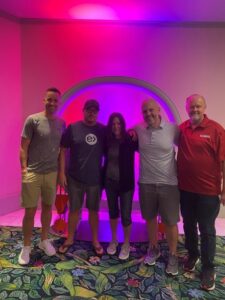 Being that I am now 42 years old and have worked in Telecom and AV for the better part of 2 decades, I have 12+ trips to Las Vegas completed and feel like I know what to expect each time I fly into Harry Reid International Airport. First, it was the annual DIRECTV Revolution Conference, then it was Channel Partners, followed by InfoComm in alternating years. As I have explained to my wife (who has never been), I feel like the mystique of Las Vegas wears off after the first or second trip out there. However, when I was approached back in 2019 with the chance to attend my first ever JBL Fest, I felt the type of excitement as if I had never been there and was eager to experience a new list of firsts. Unfortunately, a family health scare cancelled my trip that year and 2 years-worth of a Pandemic further delayed my first JBL Fest until 2022. Having enjoyed last year as much as I did, I still felt a certain sense of the “exciting unknown” when I was invited to attend again this year. Along with our Exertis Almo Incentive Winners – Josh Taylor, Kyle Smith, Randy Robinovitch, and Ray Farler, I headed out to Las Vegas and made sure to document JBL Fest 2023 for all of you!
Being that I am now 42 years old and have worked in Telecom and AV for the better part of 2 decades, I have 12+ trips to Las Vegas completed and feel like I know what to expect each time I fly into Harry Reid International Airport. First, it was the annual DIRECTV Revolution Conference, then it was Channel Partners, followed by InfoComm in alternating years. As I have explained to my wife (who has never been), I feel like the mystique of Las Vegas wears off after the first or second trip out there. However, when I was approached back in 2019 with the chance to attend my first ever JBL Fest, I felt the type of excitement as if I had never been there and was eager to experience a new list of firsts. Unfortunately, a family health scare cancelled my trip that year and 2 years-worth of a Pandemic further delayed my first JBL Fest until 2022. Having enjoyed last year as much as I did, I still felt a certain sense of the “exciting unknown” when I was invited to attend again this year. Along with our Exertis Almo Incentive Winners – Josh Taylor, Kyle Smith, Randy Robinovitch, and Ray Farler, I headed out to Las Vegas and made sure to document JBL Fest 2023 for all of you! Landing Las Vegas, you are almost immediately greeted by hosts holding “JBL Fest” signage at the baggage claim area and are ushered to a waiting shuttle (aka a rather swanky party bus) which took us to the Park MGM where we would be staying for the next 2 days. Surprise #1 on this trip was while I was checking in and I lift my head to notice Kevin Humphrey, Harman Distribution Manager (and close friend), standing next to me. I have always said that I am only as successful as those around me, so to be able to share this experience with someone deserving like Kevin made the event that much more rewarding. We then walked to the Hospitality Suite where I received a welcome packet and the “infamous” JBL Fest Swag Bag. This year, the bag contained several JBL branded items such as water bottles and hand sanitizer, but the highlight was the customized pair of JBL Tour Pro 2 earbuds. If you are not familiar with these, they are JBL’s newest noise cancelling earbuds which were featured in WIRED’s Best of CES 2023. Spatial Audio, wireless charging, and a first of its kind touch display on the charging case make these anything but your typical earbuds. I had to open and pair them with my phone the second I got to my room! Once we got to the complimentary lunch, I was able to meet with our team as well as with Frank Joseph and Whitney Bosch from the Harman marketing team as we game-planned the day and discussed all that was happening.
Landing Las Vegas, you are almost immediately greeted by hosts holding “JBL Fest” signage at the baggage claim area and are ushered to a waiting shuttle (aka a rather swanky party bus) which took us to the Park MGM where we would be staying for the next 2 days. Surprise #1 on this trip was while I was checking in and I lift my head to notice Kevin Humphrey, Harman Distribution Manager (and close friend), standing next to me. I have always said that I am only as successful as those around me, so to be able to share this experience with someone deserving like Kevin made the event that much more rewarding. We then walked to the Hospitality Suite where I received a welcome packet and the “infamous” JBL Fest Swag Bag. This year, the bag contained several JBL branded items such as water bottles and hand sanitizer, but the highlight was the customized pair of JBL Tour Pro 2 earbuds. If you are not familiar with these, they are JBL’s newest noise cancelling earbuds which were featured in WIRED’s Best of CES 2023. Spatial Audio, wireless charging, and a first of its kind touch display on the charging case make these anything but your typical earbuds. I had to open and pair them with my phone the second I got to my room! Once we got to the complimentary lunch, I was able to meet with our team as well as with Frank Joseph and Whitney Bosch from the Harman marketing team as we game-planned the day and discussed all that was happening. Next stop was a VIP-access tour of Allegiant Stadium which is where the Las Vegas Raiders play their home games. Seeing as how I just recently took my daughter on a tour of Citizens Bank Park as well as Lincoln Financial Field, this was right up my alley! Aside from going down to the field level and experiencing this newer facility up close, we received some behind the scenes sneak peaks into the A/V which included their control/IT room which housed an impressive 50+ Crown DCI4x1250N amplifiers and multiple BSS Processors amongst other items. Simply standing next to the rack of amps was eye-opening as you realize how much it takes to truly power that type of operation. While we didn’t get up close to the speakers, we did learn it was the JBL VLA Series of Line Array Speakers which are typically found in stadium-type applications. Following the tour we had a little downtime before meeting up for the evening welcoming reception at the Hotel, which we were greeted by a team photo opportunity and another swag bag complete with a custom JBL Fest Masterclass Bluetooth speaker. This opening event was followed by an even bigger party at the onsite club. Mingling with a diverse group of worldwide influencers and Harman executives is always fun but I was fortunate enough to make my way to the Harman VIP lounge which then led to a once in a lifetime opportunity! Kyle Smith and I were invited into a back room where we met and had a photo opportunity with Lenny Kravitz! To finish things off was a rather surprise appearance from Grammy winning artist Bruno Mars who sang along with some of his biggest hits. Not a bad way to spend a Thursday night!
Next stop was a VIP-access tour of Allegiant Stadium which is where the Las Vegas Raiders play their home games. Seeing as how I just recently took my daughter on a tour of Citizens Bank Park as well as Lincoln Financial Field, this was right up my alley! Aside from going down to the field level and experiencing this newer facility up close, we received some behind the scenes sneak peaks into the A/V which included their control/IT room which housed an impressive 50+ Crown DCI4x1250N amplifiers and multiple BSS Processors amongst other items. Simply standing next to the rack of amps was eye-opening as you realize how much it takes to truly power that type of operation. While we didn’t get up close to the speakers, we did learn it was the JBL VLA Series of Line Array Speakers which are typically found in stadium-type applications. Following the tour we had a little downtime before meeting up for the evening welcoming reception at the Hotel, which we were greeted by a team photo opportunity and another swag bag complete with a custom JBL Fest Masterclass Bluetooth speaker. This opening event was followed by an even bigger party at the onsite club. Mingling with a diverse group of worldwide influencers and Harman executives is always fun but I was fortunate enough to make my way to the Harman VIP lounge which then led to a once in a lifetime opportunity! Kyle Smith and I were invited into a back room where we met and had a photo opportunity with Lenny Kravitz! To finish things off was a rather surprise appearance from Grammy winning artist Bruno Mars who sang along with some of his biggest hits. Not a bad way to spend a Thursday night!
 Waking up on Friday I knew we were in for a long but rewarding day. First off was breakfast which came complete with a Johnny Fly Sunglasses gifting station! You essentially walk up and try on several pairs of high-end sunglasses and then say “ok ill take these”. The wrap them up in a custom JBL case and you are on your way! We then made our way to the Installed Audio Masterclass presented by
Waking up on Friday I knew we were in for a long but rewarding day. First off was breakfast which came complete with a Johnny Fly Sunglasses gifting station! You essentially walk up and try on several pairs of high-end sunglasses and then say “ok ill take these”. The wrap them up in a custom JBL case and you are on your way! We then made our way to the Installed Audio Masterclass presented by 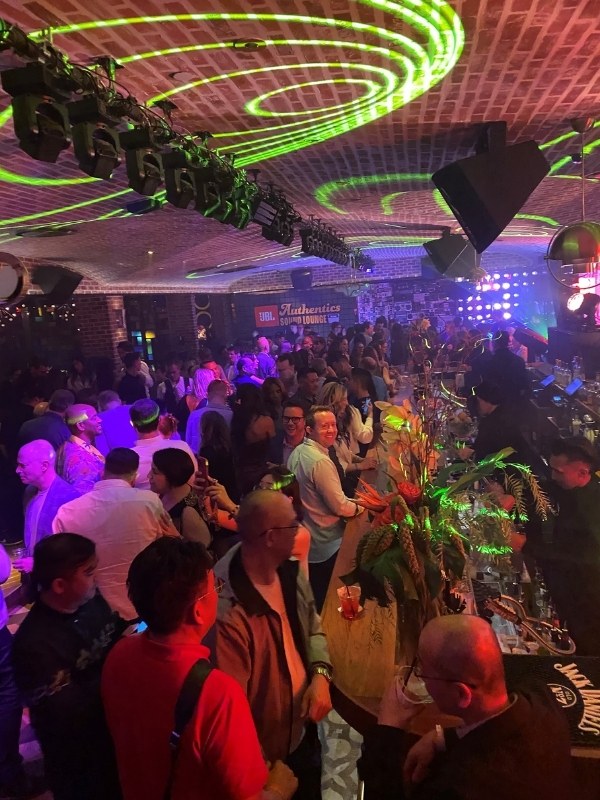

 We immediately went to the JBL Stage with VIP access where we all met up for drinks, food, and music. I ventured off while Bebe Rexha was performing and found myself with perfect view of the main stage where an EDM DJ was getting the crowd fired up for the next act. After looking through the street vendors and other areas, I called it a night as I listened to Bebe Rexha perform with special guest Tyler Hubbard (from Florida Georgia Line). The Killers were the headliner of Friday night and through videos I saw from Josh Taylor, it seemed our entire team left the trip on a high note!
We immediately went to the JBL Stage with VIP access where we all met up for drinks, food, and music. I ventured off while Bebe Rexha was performing and found myself with perfect view of the main stage where an EDM DJ was getting the crowd fired up for the next act. After looking through the street vendors and other areas, I called it a night as I listened to Bebe Rexha perform with special guest Tyler Hubbard (from Florida Georgia Line). The Killers were the headliner of Friday night and through videos I saw from Josh Taylor, it seemed our entire team left the trip on a high note!
 For me, I was always looking for the connectors on the cables to give me some sort of indication as to what signal they were sending, and to a certain degree they do. An XLR mic cable is GENERALLY used to for mic level audio, but not always. In many cases, there aren’t cable connectors at all, sometimes there’s just PHEONIX1 block connectors. Anyway, it became clearer to me when I learned that they’re all pretty much the same signal just at different voltage levels.
For me, I was always looking for the connectors on the cables to give me some sort of indication as to what signal they were sending, and to a certain degree they do. An XLR mic cable is GENERALLY used to for mic level audio, but not always. In many cases, there aren’t cable connectors at all, sometimes there’s just PHEONIX1 block connectors. Anyway, it became clearer to me when I learned that they’re all pretty much the same signal just at different voltage levels. So, really, an audio signal is just like a little
So, really, an audio signal is just like a little 
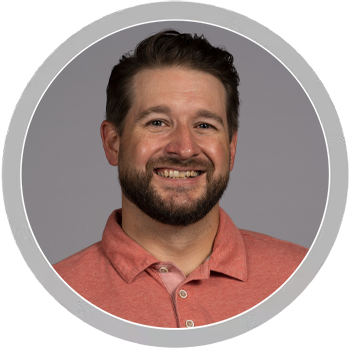
 Xilica has already seen great success in other parts of the world with conference and system processing applications. Besides the card-based approach to the DSP, they have also developed a plenum rated POE+ amplifier (
Xilica has already seen great success in other parts of the world with conference and system processing applications. Besides the card-based approach to the DSP, they have also developed a plenum rated POE+ amplifier ( a passive ceiling speaker (
a passive ceiling speaker ( On top of this, two versions of control appliances allow simple, user-friendly control of any system. The
On top of this, two versions of control appliances allow simple, user-friendly control of any system. The 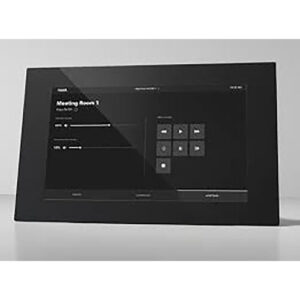 more advanced control of user defined parameters in an easy-to-use format. Controls can also be integrated with other well-known control platforms such as
more advanced control of user defined parameters in an easy-to-use format. Controls can also be integrated with other well-known control platforms such as 
 One of the worst case scenarios is when the client’s equipment budget expectations and reality are not one-and-the-same. I had one of those recently.
One of the worst case scenarios is when the client’s equipment budget expectations and reality are not one-and-the-same. I had one of those recently.
 My neighbors had a yard sale recently, and amongst the treasures was an older Master Appliance heat gun. It was missing the base and the nozzle was a little beat up. I snatched it up right away. Why? Because I knew I could order replacement parts like bases, elements, switches, and more. It is not a throwaway product. It’s a quality product that you can keep running for decades, because if something does need attention, parts can be obtained, the unit fixed and put back into daily service easily.
My neighbors had a yard sale recently, and amongst the treasures was an older Master Appliance heat gun. It was missing the base and the nozzle was a little beat up. I snatched it up right away. Why? Because I knew I could order replacement parts like bases, elements, switches, and more. It is not a throwaway product. It’s a quality product that you can keep running for decades, because if something does need attention, parts can be obtained, the unit fixed and put back into daily service easily. Category 1: The Hybrid Indoor/Outdoor Speaker. A good example of this would be the
Category 1: The Hybrid Indoor/Outdoor Speaker. A good example of this would be the  Category 2: All Weather. A good example of this would be the
Category 2: All Weather. A good example of this would be the  Category 3: Powered and Portable. This category houses some of JBL’s best selling speakers such as the
Category 3: Powered and Portable. This category houses some of JBL’s best selling speakers such as the  Whether it is the ever-popular VTX A Series or the newer
Whether it is the ever-popular VTX A Series or the newer 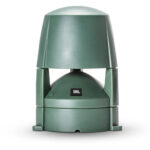 This series comes with an ip-56 rating, so you know you will be getting long-term use of these. JBL has recently expanded this category to include in-ground subwoofers and the new
This series comes with an ip-56 rating, so you know you will be getting long-term use of these. JBL has recently expanded this category to include in-ground subwoofers and the new  in their ground stakes so more customers could utilize. Another point of emphasis was how they always strive to be ahead of the trends/needs of their customers. I referenced the recent surge we saw in outdoor audio needs from 2020 to now, and Tewks reminded me that it takes 4, 5, or even 6 years to fully develop a new product so with that in mind it was clear that Harman placed an emphasis on this category well before the need even was present.
in their ground stakes so more customers could utilize. Another point of emphasis was how they always strive to be ahead of the trends/needs of their customers. I referenced the recent surge we saw in outdoor audio needs from 2020 to now, and Tewks reminded me that it takes 4, 5, or even 6 years to fully develop a new product so with that in mind it was clear that Harman placed an emphasis on this category well before the need even was present.






